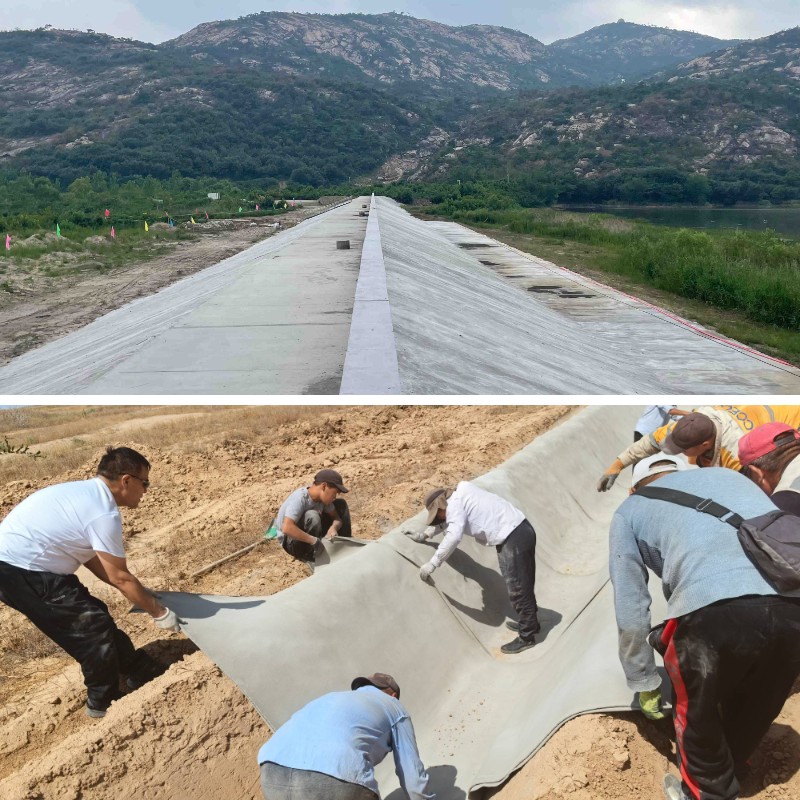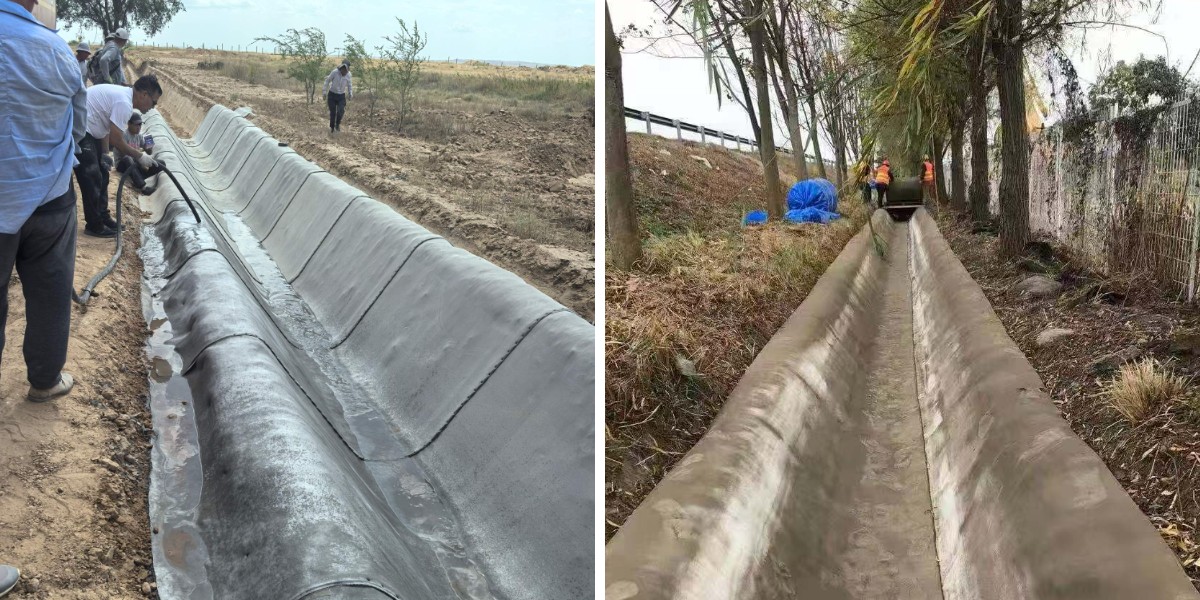Cement Blanket for Residential Projects: Small-Scale Uses Like Garden Edging & Foundation
Tired of flimsy backyard edging that falls aside after a season, or daunted by using the mess of mixing concrete for small residential foundations? There’s a higher solution: cement blanket, additionally regarded as cement blanket. This progressive fabric combines the electricity of concrete with the flexibility of fabric, making it best for DIYers tackling small-scale residential projects. Whether you’re defining backyard beds or laying a basis for a device shed, cement blanket simplifies the procedure except sacrificing durability. In this guide, we’ll destroy down the whole lot you want to comprehend to grasp this game-changing material.
1. Why Cement Blanket (cement blanket) Outshines Traditional Materials
Before diving into projects, it’s critical to recognize why cement blanket is a optimal desire for small residential jobs. Unlike ordinary concrete—which requires mixing, pouring, and cautious leveling—concrete material is a ready-to-use material impregnated with dry cement. When activated with water, it hardens into a rigid, long lasting structure. Here’s how it stacks up in opposition to traditional options:
1.1 Unbeatable Durability for Residential Use
Once cured, cement blanket boasts a compressive energy of up to 5,000 psi—comparable to popular concrete. It resists rot, insect damage, and harsh weather, from freezing winters to sizzling summers. For backyard edging, this potential no extra changing rotting timber boards or cracked plastic strips each and every few years. For small foundations, it affords a secure base that withstands soil motion and heavy masses (up to 10,000 lbs for appropriate set up 1/2-inch thick blanket).
1.2 DIY-Friendly Installation (No Concrete Mixing!)
Traditional concrete tasks demand heavy mixing tubs, shovels, and unique water-to-cement ratios. Concrete fabric eliminates this hassle: it arrives rolled up, light-weight (about 10 lbs per rectangular yard), and convenient to reduce with a utility knife. Even novices can unroll it, function it, and spark off it with a backyard hose—no distinct capabilities or equipment required. This cuts set up time via 50% in contrast to mixing and pouring concrete.
1.3 Cost-Effective for Small-Scale Jobs
Hiring a contractor to pour a small basis or installation backyard edging can fee $15–$30 per rectangular foot. Doing it your self with cement blanket slashes fees to $5–$10 per rectangular foot. A 10x10-foot roll of concrete fabric normally runs $50–$100, and you solely want fundamental equipment (most of which you already own) and water. Plus, there’s no waste—you certainly reduce the blanket to suit your mission size.
2. Pre-Project Prep: Tools & Cement Blanket Selection
Success with cement blanket begins with appropriate preparation. You’ll want a handful of fundamental equipment and the proper cement blanket(specifications) for your project.
2.1 Essential Tools for the Job
Gather these equipment earlier than starting: a measuring tape, utility knife (for reducing cement blanket), backyard rake, shovel, stakes (to tightly closed the blanket), a backyard hose with a spray nozzle, and a level. For basis projects, add a tamper (manual or electric) to compact the base soil. You won’t want mixing tools—remember, the blanket comes pre-impregnated with cement!
2.2 How to Choose the Right Cement Blanket
Cement blankets come in one of a kind thicknesses (1/4 inch to 1 inch) and roll sizes. For small-scale residential projects:
Garden edging: Opt for 1/4–1/2 inch thick blanket (6x25-foot rolls work best). Thinner blankets are bendy sufficient to comply with curved edges.
Small foundations (tool sheds, birdbaths, or planter boxes): Use 1/2–3/4 inch thick blanket for introduced strength. Choose 10x10-foot rolls for large bases.
Always take a look at that the product is labeled “cement blanket” or “cement blanket” and rated for residential use—avoid industrial-grade picks (they’re heavier and greater high-priced than needed).
2.3 Prep the Site for Success
Clear the undertaking vicinity of weeds, rocks, and debris. For backyard edging: Dig a 2–3 inch deep trench alongside the preferred area (width matching your blanket). Rake the trench base flat and compact it gently with your foot. For foundations: Mark the footprint with stakes and string, then dig a 4–6 inch deep trench. Compact the base with a tamper to forestall settling—this step is integral for long-term stability.
3. Step-by-Step: Install Cement Blanket for Garden Edging
Garden edging is one of the most famous makes use of for cement blanket, as it creates clean, long lasting borders that hold mulch in and grass out. Follow these steps for a expert finish:
3.1 Cut and Position the Cement Blanket
Measure the size of your backyard side and reduce the concrete fabric to dimension with a utility knife (cut on a flat floor to keep away from tearing). Unroll the blanket and location it in the trench, making sure it covers the complete length. For curved edges, gently bend the blanket—its flexibility permits for clean curves besides cracking. Secure the blanket to the floor with stakes each and every 2–3 toes alongside the pinnacle area to stop shifting.
3.2 Activate the Blanket with Water
Use a backyard hose with a spray nozzle (set to “shower” mode) to absolutely moist the cement blanket. Start at one give up and work your way to the other, making sure the complete blanket is saturated—you’ll see it darken as it absorbs water. Don’t rush this step: under-watering leads to susceptible curing, whilst over-watering washes away cement. Aim for a damp, now not soaking, consistency.
3.3 Cure and Finish the Edging
Allow the cement blanket to treatment for 24–48 hours (longer in cool, humid weather). It will harden into a inflexible edge. Once cured, backfill the trench with soil or mulch round the edging. For a polished look, paint the pinnacle side with exterior concrete paint or add ornamental stones alongside the base. Your edging will now face up to lawnmowers, heavy rain, and years of use.
4. Build a Small Foundation with Cement Blanket
A cement blanket basis is ideal for light-weight buildings like device sheds, playhouses, or backyard planter boxes. It’s quicker and cleaner than pouring concrete, and simply as strong.
4.1 Prepare the Base and Lay the Blanket
After compacting the trench base, unroll the concrete material to cowl the whole basis footprint. Cut the blanket to match round stakes or corners, overlapping edges by using two inches (this creates a seamless bond). For greater strength, fold the edges of the blanket up two inches alongside the trench walls—this types a “lip” that prevents soil from seeping underneath the foundation.
4.2 Secure and Activate the Blanket
Stake the cement blanket to the floor round the perimeter (every 18 inches) to hold it in place. Use a degree to make sure the blanket is flat—adjust the base soil if needed. Saturate the blanket with water using a spray nozzle, focusing on overlapping areas to make sure they bond properly. Let the blanket take a seat for 30 minutes, then spray it once more to make certain full activation.
4.3 Cure and Install the Structure
Cure the concrete material for 48–72 hours. Avoid strolling on it in the course of this time. Once absolutely cured, it will be inflexible and prepared to help your structure. For device sheds or playhouses, region pressure-treated lumber on pinnacle of the basis (secure with concrete screws) earlier than assembling the structure. For planter boxes, you can fill the basis at once with soil—no extra lining needed!
5. Common Cement Blanket Mistakes to Avoid
Even with its convenient installation, small blunders can compromise your cement blanket project. Here are the pinnacle pitfalls to steer clear of:
5.1 Under-Watering or Over-Watering
The largest mistake DIYers make is now not saturating the concrete material evenly. Under-watering leaves dry spots that in no way entirely harden, whilst over-watering washes away cement particles. Stick to a mild spray and maintain the blanket damp for 10–15 minutes after preliminary wetting.
5.2 Skipping Site Preparation
A bumpy or uncompacted base leads to uneven curing and cracking. Always rake the web page flat and compact the soil (especially for foundations). For sloped areas, add a layer of gravel to enhance drainage earlier than laying the blanket.
5.3 Rushing the Curing Process
It’s tempting to use your mission proper away, however cement blanket wishes time to attain full strength. Wait at least 24 hours for edging and forty eight hours for foundations earlier than including weight or backfilling. Avoid curing in severe temperatures—cover the blanket with a tarp if it’s under 40°F (4°C) or above 90°F (32°C).
Final Thoughts: Elevate Your Residential Projects with Cement Blanket
From backyard edging to small foundations, cement blanket (or cement blanket) is a DIYer’s great friend. Its durability, ease of use, and value financial savings make it a no-brainer for small-scale residential projects. By following this guide, you’ll pass the mess of typical concrete and create long-lasting, professional-looking results. Ready to radically change your yard? Grab a roll of cement blanket, acquire your tools, and get started—your future self (and your garden) will thank you!
Contact Us
Company Name: Shandong Chuangwei New Materials Co., LTD
Contact Person :Jaden Sylvan
Contact Number :+86 19305485668
WhatsApp:+86 19305485668
Enterprise Email: cggeosynthetics@gmail.com
Enterprise Address: Entrepreneurship Park, Dayue District, Tai 'an City,
Shandong Province










